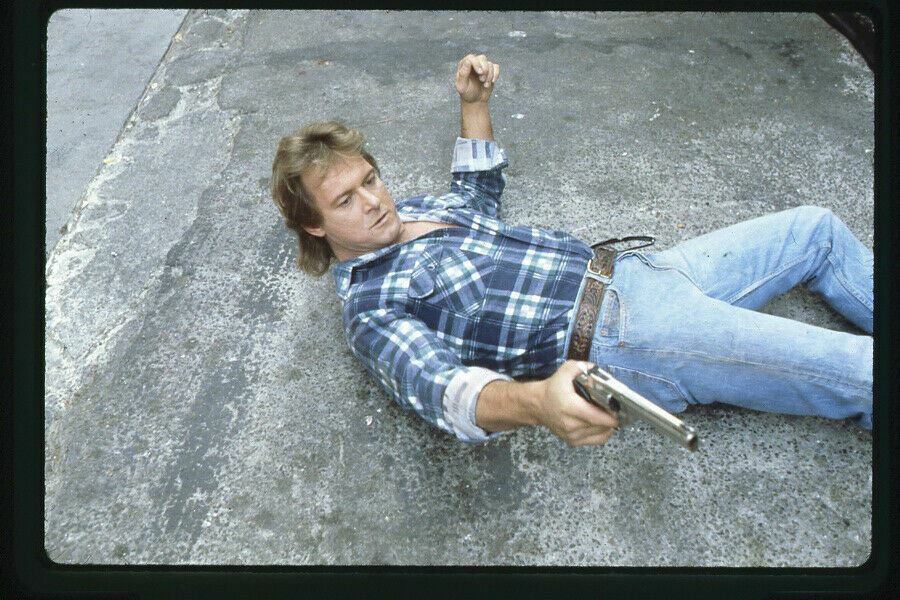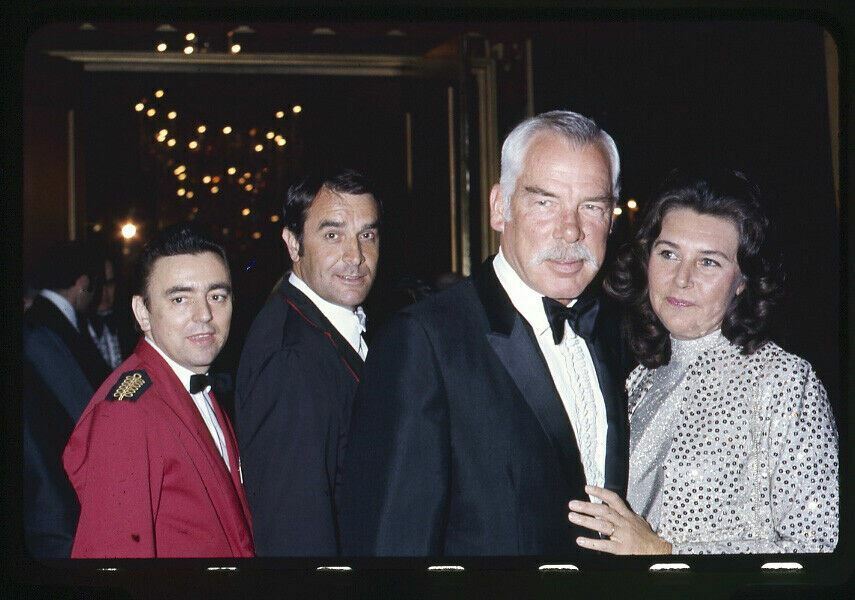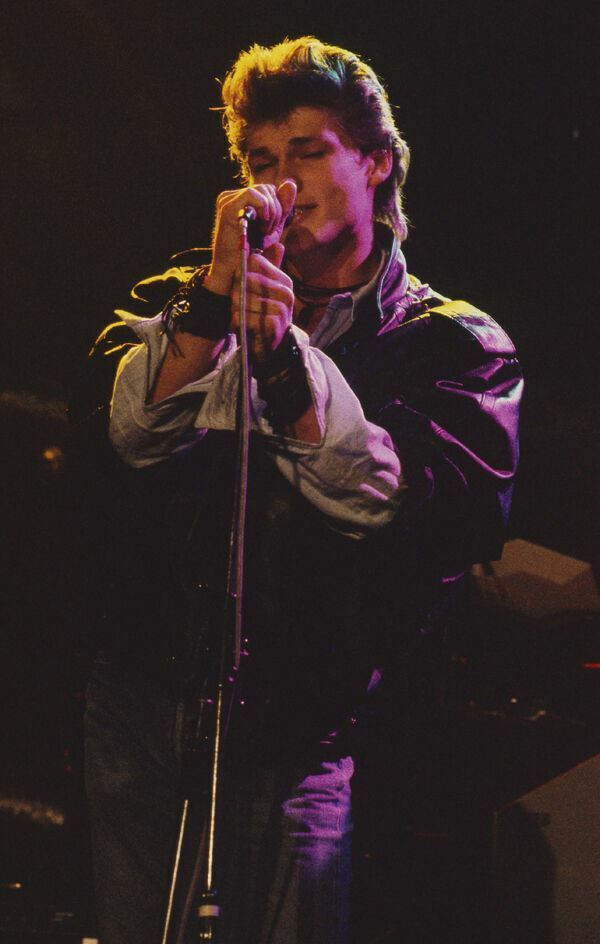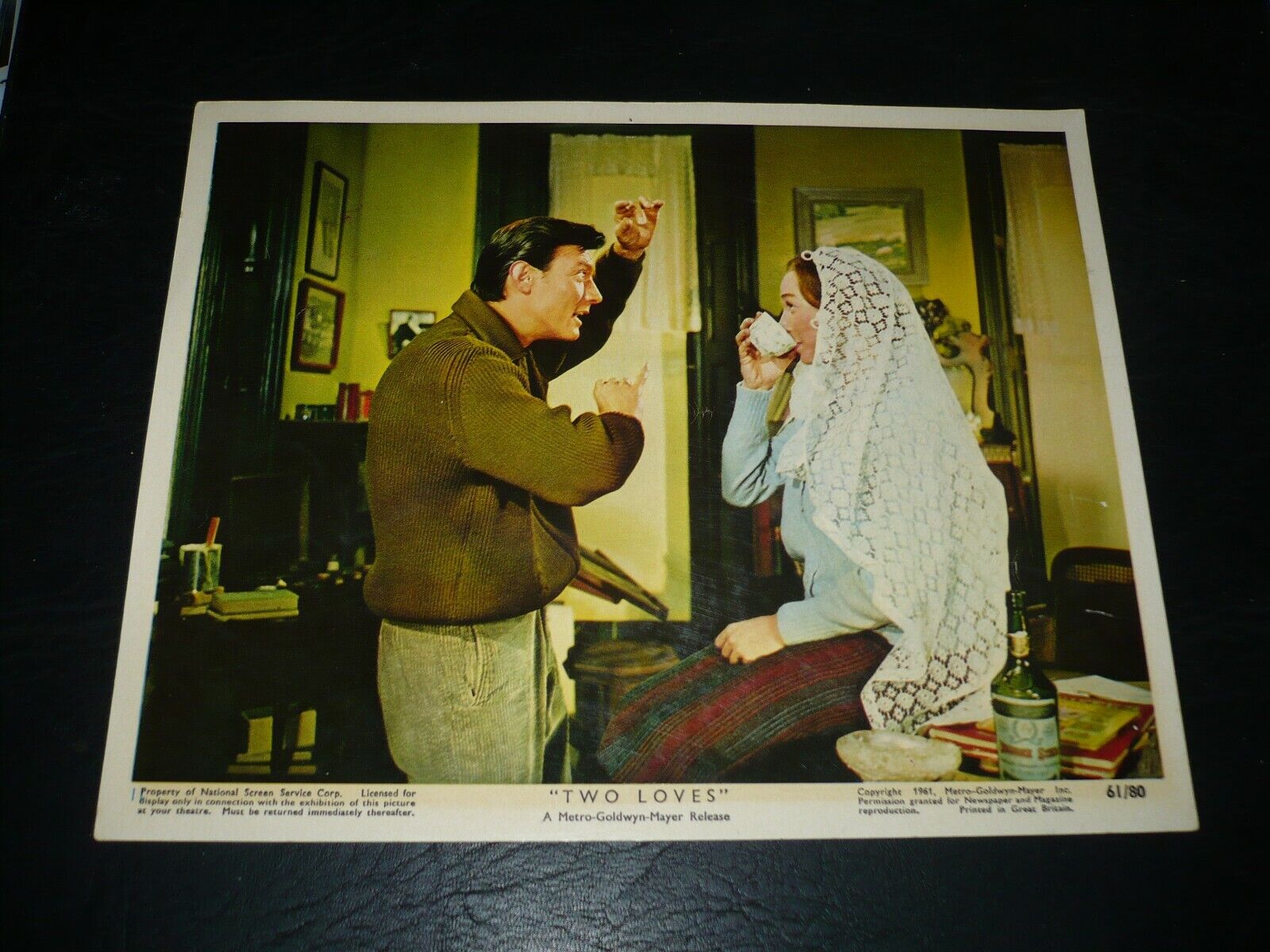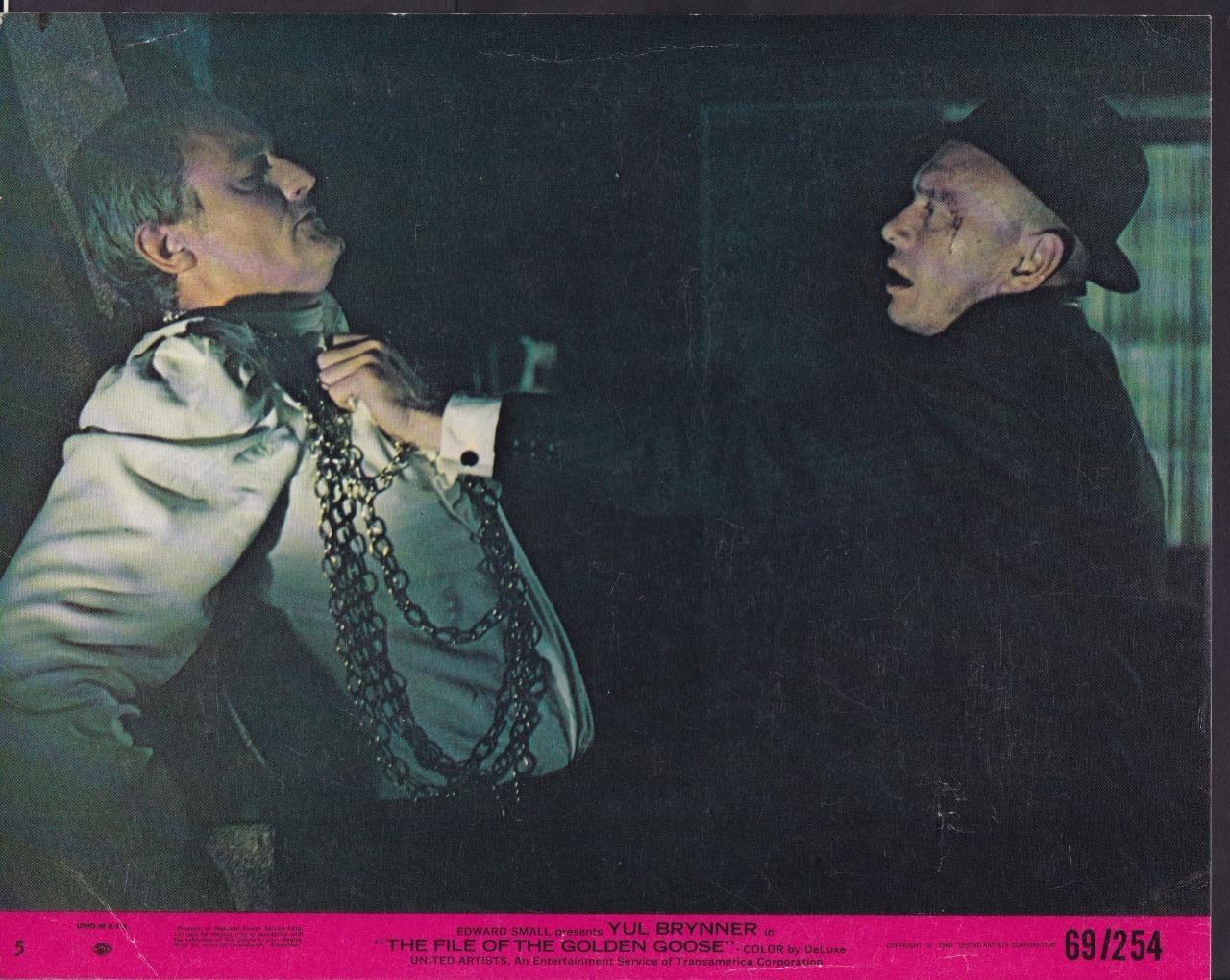-40%
Stanley Kubrick Sci-Fi Epic 2001: A Space Odyssey Original 70mm Film Frame
$ 13.43
- Description
- Size Guide
Description
ITEM: This is a vintage and original 1968 70mm film frame from the Stanley Kubrick science-fiction epic2001: A Space Odyssey
. The frame was mounted by MGM for original release publicity for print ads.
The film is noted for its scientifically accurate depiction of space flight, pioneering special effects, and ambiguous imagery. The film received diverse critical responses ranging from those who saw it as darkly apocalyptic in tone to those who saw it as an optimistic reappraisal of the hopes of humanity. The film garnered a cult following and became the highest-grossing North American film of 1968. It was nominated for four Academy Awards; Kubrick won for his direction of the visual effects. 2001: A Space Odyssey is widely regarded as one of the greatest and most influential films ever made. In 1991, it was deemed "culturally, historically, or aesthetically significant" by the United States Library of Congress and selected for preservation in the National Film Registry. In 2010, it was named the greatest film of all time by The Moving Arts Film Journal.
PLEASE NOTE: This auction is for the 70mm film frame only. There are no copyright or reproduction rights included in the final sale. Additionally, the first image has been color corrected to show the picture as it was intended.
Guaranteed to be 100% vintage and original from Grapefruit Moon Gallery.
More about Stanley Kubrick:
One of the most consistently fascinating filmmakers in the latter half of the 20th century, director Stanley Kubrick saw his seminal work praised and damned with equal vigor, though oftentimes found that his film's reputations grew over time. Just as his singularly brilliant visual style won him great acclaim, his unconventional sense of narrative and seeming lack of overt emotionalism often elicited critical scorn. Emerging onto the filmmaking scene with films like "Killer's Kiss" (1953) and "The Killing" (1956), Kubrick truly arrived with his bleak antiwar epic "Paths of Glory" (1957). After playing the role of director-for-hire on the sword and sandal epic "Spartacus" (1960), Kubrick entered the pantheon of great filmmakers with "Dr. Strangelove or: How I Stopped Worrying and Learned to Love the Bomb" (1964), often cited as the finest political satire ever made. Continuing that tradition, he directed the technically brilliant "2001: A Space Odyssey" (1968), which was hailed as the best science fiction film of all time, though not without earning some detractors for its lack of emotion. Kubrick courted controversy with the ultraviolent "A Clockwork Orange" (1971) before making what many considered to be one of his best films, "Barry Lyndon" (1975). With "The Shining" (1980), Kubrick waded into the horror genre with exacting aplomb, though he misfired a bit with the uneven Vietnam picture "Full Metal Jacket" (1987). Twelve years later, Kubrick directed his final film, "Eyes Wide Shut" (1999), which managed to garner its share of controversy even after his death prior to its release. Cited by many filmmakers from Steven Spielberg to Woody Allen as being a source of inspiration, Kubrick remained a unique artist capable of a wide diversity in a medium often dominated by repetition and mediocrity. Though his ambitious and often obsessive vision sometimes exceeded his capacity to satisfy the demands of mainstream filmmaking, Kubrick nonetheless laid claim to a distinctive style of cinema often imitated, but never duplicated.
Born on July 26, 1928 in the Bronx, NY, Kubrick was raised by his father, Jacques, a doctor, and his mother, Gertrude. When he was 12, Kubrick's father taught him how to play chess, sparking a lifelong obsession with the game, while also introducing his son to photography after giving him a Graflex camera. Despite being a rather poor student throughout his childhood - he later described himself as a "school misfit" - Kubrick spent time honing his camera skills while attending William H. Taft High School. For almost a year, he was the school's official photographer despite his below average grades. He eventually graduated in 1946. During this time, Kubrick took more of a professional interest in photography and began finding ways to sell his pictures while becoming deeply serious about chess after he joined the Marshall Chess Club. The death of President Franklin D. Roosevelt provided an opportunity for the young photographer when he snapped a photo of a distraught newspaper dealer, which he sold to Look magazine. He was soon hired as a staff photographer and spent the next several years working for the magazine while briefly attending classes at City College and Columbia University.
Kubrick married his first wife and high school sweetheart, Toba Metz, in 1947, only to divorce in 1952. Also during this time, he began taking an interest in film, particularly documentaries, and was persuaded by a friend to make short documentaries for a provider of newsreels to movie theaters. Kubrick agreed and self-financed his first film, "Day of the Fight" (1951), a 16-minute look at middleweight boxer Walter Cartier's preparations for his match against contender Bobby James on April 17, 1950. He moved on to direct the medium-length documentary, "The Seafarers" (1953), which basically served as a promotional film to recruit sailors into the Seafarers International Union. Despite the rather hum-drum nature of the film, it did feature a sideways dolly shot that served as an early demonstration of what later became one of his signature techniques. Kubrick moved on to narrative filmmaking with "Fear and Desire" (1953), a war film made with a handful of actors and crew, one of whom was his first wife. Because of the low production values and continuity errors on display, Kubrick pulled the film from circulation, only to find it back in the public after letting the copyright lapse into the public domain some years later.
Kubrick went on to direct his second low budget feature, "Killer's Kiss" (1955), a film noir about a second-rate boxer who tries to flee New York with his dance hall girlfriend (Irene Kane), only to run afoul of her gangster boss (Frank Silvera). Working with producer James B. Harris, Kubrick graduated to professional cast and crew with his next effort, "The Killing" (1956), a well-paced and assured noir about a race track heist spearheaded by a career criminal (Sterling Hayden) looking to make one last score. Kubrick's first major feature effort suffered at the box office while failing to garner praise from critics of that time. "The Killing" did, however, earn respectability over time and earned its place as one of the classics of the genre. Kubrick went on to direct his first truly great film, "Paths of Glory" (1957), which marked his emergence as a major director. Sharp, intelligent and superbly acted, the World War I saga featured star and producer Kirk Douglas as a French colonel who defends three soldiers accused of cowardice against an incompetent general (Adolphe Menjou) determined to execute them for his own failure. A box office disappointment upon its release and banned in both France and Germany, "Paths of Glory" was a critical hit that ensured its stature throughout the years as one of the finest antiwar films ever made.
Although his next effort seemed to be more of a personal effort for producer-star Kirk Douglas than the director, Kubrick demonstrated that he could function within mainstream Hollywood with the sword-and-sandal epic "Spartacus" (1960), the first and only feature film he did as a work-for-hire. Brought in a week into shooting after original director Anthony Mann was replaced by Douglas, Kubrick nonetheless established his presence right away by promptly firing the movie's cinematographer. A loosely historical look at the titular Thracian slave (Douglas) who dared to take on the Roman Empire with a large scale slave revolt, "Spartacus" retained Kubrick's rather bleak outlook despite being a major Hollywood production and one of the more expensive ones to make at the time. Several critics praised the visual aspects of the widescreen, Technicolor epic, which some considered to be a notch or two above the standard spectacle of the day, while also highlighting the underlying themes between the aesthetics of warfare and its human consequences. Meanwhile, the film earned six Academy Award nominations, mainly in more technical categories, and took home four.
In 1961, Kubrick left the United States for England in 1961 in search of greater independence and control of his films. It was there that he worked for the remainder of his career, developing and producing meticulously crafted, yet markedly different films. The first was "Lolita" (1962), an adaptation of Vladimir Nabokov's controversial novel about Humbert Humbert (James Mason), a middle-aged man who develops an infatuation with Dolores Haze, a promiscuous 14-year-old girl (Sue Lyon). But because of censorship and the public mores of the time, Kubrick was forced to reduce the sexual relationship between Humbert and the girl to nothing more than mere suggestion. In fact, Kubrick later commented that if he had known how difficult the censors were going to be, he never would have made the movie at all. Also featuring comedic actor Peter Sellers, who donned several disguises to play various personas from his greatly expanded character, Clare Quilty, "Lolita" was as controversial as Vladimir Nabokov's original book despite its watered-down content. With little advertising, the film did well enough upon its release and earned several award nominations for the main cast, as well as an Oscar win for Nabokov for adapting his own material.
The ironic touch displayed in "Lolita" exploded to cosmic proportions with the black comedy "Dr Strangelove or: How I Learned to Stop Worrying and Love the Bomb" (1964). Beginning as a serious thriller about the possibility of nuclear Armageddon, Kubrick decided instead to inject stark humor into the script after seeing the inherent comedy in the idea of mutual assured destruction. Peter Sellers again was the star and this time played three distinct roles: a British attaché to a crazed American general (Sterling Hayden); the mild-mannered President of the United States, who tries to call off the attack while battling a gung-ho general (George C. Scott); and the titular Dr. Strangelove, a wheelchair-bound former Nazi scientist who routinely calls the president Mein Führer and struggles with a hand that wants to give the Nazi salute. With such classic moments as Seller's president breaking up a fight and declaring "Gentlemen, you can't fight in here. This is the war room," to the Air Force captain played by Slim Pickens waving his cowboy hat and riding to mankind's doom atop a falling nuclear bomb, "Dr. Strangelove" marked a true achievement for the director, who created what many considered to have been the best political satire of the 20th century.
Despite some moral backlash, the successes of "Lolita" and "Strangelove" earned Kubrick the freedom to choose his own subjects and, more importantly, to exert total control over the filmmaking process. The first product of this license was the science-fiction classic "2001: A Space Odyssey" (1968). Having set out to make what he called the "proverbial good science fiction movie," Kubrick spent five years making "2001," which started with a collaboration with science fiction author, Arthur C. Clarke, who wrote his novel of the same name while penning the script with the director. A stark and often esoteric look at human evolution, technology and alien life, "2001" was a visually hypnotic film that contained little dialogue and few explicit explanations, but was chock full of filmic metaphors and groundbreaking special effects that remained industry standards for the next decade. Though it received mixed reviews following its initial release, "2001" grew over time - as many Kubrick films had a tendency to do - into becoming what many considered to be the finest science fiction movies ever made, and arguably one of the best in any genre. Featuring such memorable moments as a senior astronaut (Keir Dullea) killing the wayward Hal 9000, to that same character transforming from a human into an extraterrestrial life form, "2001" was without a doubt Kubrick's finest achievement.
Further cementing his anti-establishment reputation, Kubrick followed "2001" with "A Clockwork Orange" (1971), adapted from the novel by Anthony Burgess. Depicting a disturbing future set in totalitarian England, the film followed Alex (Malcolm McDowell), a Beethoven-loving amoral punk who leads his gang of droogs on a series of ultra-violent assaults until he is captured by authorities and subjected to nasty behavior-modification therapy. With an initial X-rating, "A Clockwork Orange" opened to come degree of controversy due several acts of onscreen violence, including a brutal rape scene that was made notorious by Alex singing "Singin' in the Rain" while beating a man and woman senseless. Forced to recut portions of the film, the director nonetheless displayed a highly visceral visual style punctuated by a camera that moved with an audacity unrivaled in contemporary cinema. Meanwhile, the film received high praise from critics and earned an Academy Award nomination for Best Picture. Kubrick next directed "Barry Lyndon" (1975), a bold attempt to bring modern techniques to bear upon a narrative set in the 18th century. Kubrick spent as much technical effort and expertise recreating the lighting and imagery of William Makepeace Thackeray's novel, as he had done inventing a future in his two previous films. Although a commercial failure, "Barry Lyndon" fit logically into the Kubrick canon, a dour fable of humanity trapped in the same determinism that had colored his previous work. And much like his previous work, the film earned a greater appreciation long after its release, with some critics citing it as one of his finest films.
Notoriously taking a long time to make a movie, Kubrick next adapted Stephen King's horror novel "The Shining" (1980), a slow-moving, but hypnotic horror film about struggling writer Jack Torrance (Jack Nicholson), who serves as the winter caretaker to the remote Overlook Hotel, only to go mad and try to kill his naïve wife (Shelley Duvall) and telepathic son (Danny Lloyd). Thanks to Nicholson's manic performance, which included the famous line "Here's Johnny!" as he chops down a bathroom door with an axe to kill his wife, "The Shining" was the recipient of diametrically opposed reviews from critics and audiences. A financial success at the time of release, it eventually earned a better reputation over time. Meanwhile, Stephen King took issue with Kubrick's take on his material, saying that he actually hated the adaptation despite some memorable visuals because of the director's apprehension with tackling the novel's supernatural elements. Eventually, King's opinions about the film mellowed years later.
Kubrick waited seven years to release his next movie, "Full Metal Jacket" (1987), an adaptation of Gustav Hasford's Vietnam war novel The Short-Timers (1979) that was essentially two movies in one. The first section focused on Private Joker (Matthew Modine), who arrives at Marine basic training on Parris Island where the recruits endure a barrage of insults from their gunnery sergeant (R. Lee Ermey), leading to the mental disintegration and eventual suicide of a slow-witted grunt (Vincent D'Onofrio). The second part followed Joker to the jungles of Vietnam, where he serves as a combat correspondent and comes across his fellow recruits, all of whom have turned jaded from seeing the horrors of war. Though compelling and well-acted, "Full Metal Jacket" paled in comparison to the tropical splendor of Francis Ford Coppola's "Apocalypse Now" (1979) and the emotional reality on display in Oliver Stone's "Platoon" (1986). More than 10 years passed until Kubrick allowed his next film "Eyes Wide Shut" (1999), starring Tom Cruise and Nicole Kidman, to see the light of day. True to form, the pedantic filmmaker labored excessively, assigning great importance to each and every image the camera would record and endlessly reshooting scenes until achieving the exact look he desired in this sexual psychodrama about a Manhattan doctor (Tom Cruise) who gets drawn into a ritualistic sexual underworld after his wife (Nicole Kidman) admits to having fantasies about another man.
On March 7, 1999, just four days after screening a final cut of "Eyes Wide Shut" for friends and family prior to its release, Stanley Kubrick died from a heart attack in his sleep. He was 70. Naturally, the director managed to court controversy even after his death when Warner Bros. took control of "Eyes Wide Shut" and digitally altered an orgy scene in order to receive an R-rating instead of the dreaded NC-17 tag. Some critics decried the studios decision to alter Kubrick's vision of the film, though it was eventually restored upon its release on DVD. Meanwhile, director Steven Spielberg directed "A.I.: Artificial Intelligence" (2001), which Kubrick began developing as far back as the early 1970s. Throughout the ensuing decades, Kubrick had extended conversations with Spielberg about the project and eventually gave his blessing for him to direct it in 1995. It took Kubrick's death for the film to get off the ground and it was eventually released in the following millennium. The film starred child actor Haley Joel Osment as a young android who sets off on a journey in a dystopian future in order to discover if he is anything more than just a robot. Hailed by most critics, who cited that Kubrick would have been pleased with the results, "A.I." benefited from the infusion of the director's bleak outlook and Spielberg's bright optimism - all of which helped put a cap on Kubrick's brilliant cinematic career.
Biography From: TCM | Turner Classic Movies



